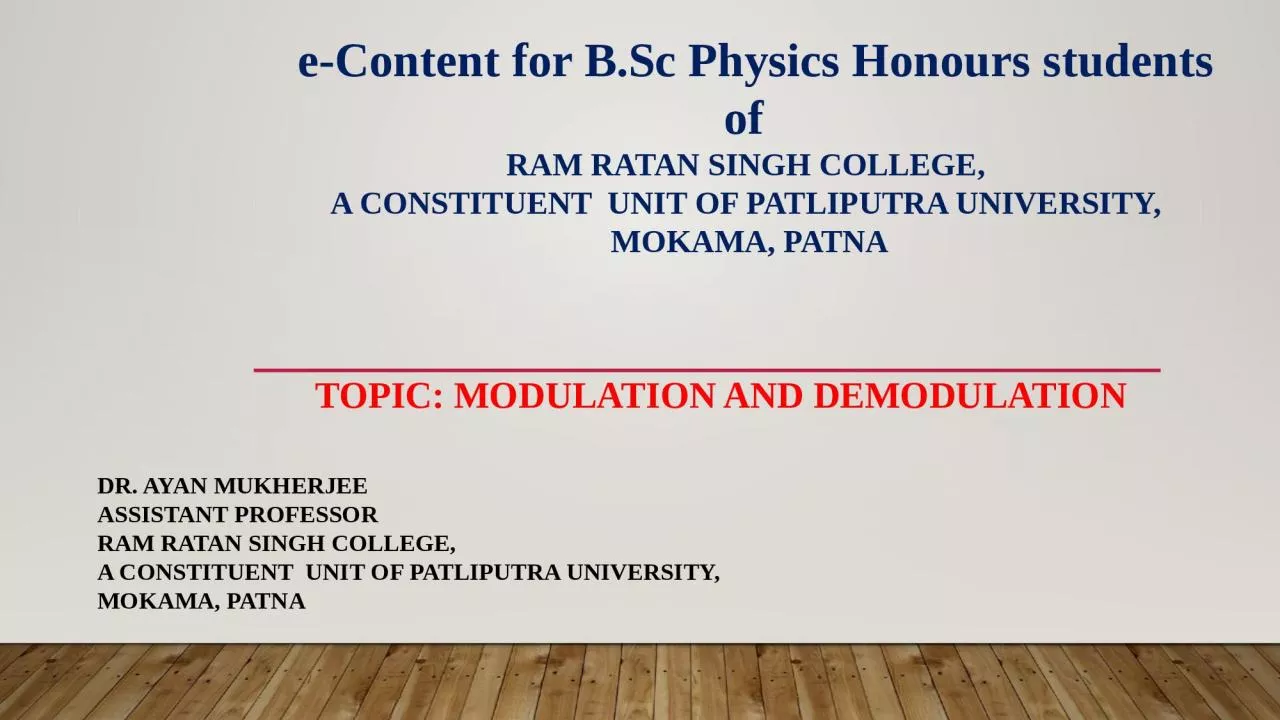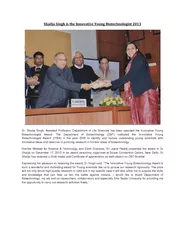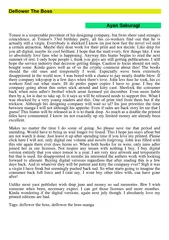PPT-DR. AYAN MUKHERJEE ASSISTANT PROFESSOR
Author : priscilla | Published Date : 2023-11-12
RAM RATAN SINGH COLLEGE A CONSTITUENT UNIT OF PATLIPUTRA UNIVERSITY MOKAMA PATNA eContent for BSc Physics Honours students of RAM RATAN SINGH COLLEGE A CONSTITUENT
Presentation Embed Code
Download Presentation
Download Presentation The PPT/PDF document "DR. AYAN MUKHERJEE ASSISTANT PROFESSOR" is the property of its rightful owner. Permission is granted to download and print the materials on this website for personal, non-commercial use only, and to display it on your personal computer provided you do not modify the materials and that you retain all copyright notices contained in the materials. By downloading content from our website, you accept the terms of this agreement.
DR. AYAN MUKHERJEE ASSISTANT PROFESSOR: Transcript
Download Rules Of Document
"DR. AYAN MUKHERJEE ASSISTANT PROFESSOR"The content belongs to its owner. You may download and print it for personal use, without modification, and keep all copyright notices. By downloading, you agree to these terms.
Related Documents














